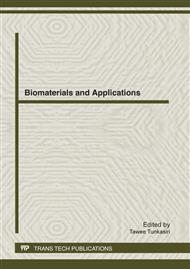p.389
p.393
p.397
p.401
p.405
p.409
p.413
p.417
p.421
Gold Recovery from Aqueous Solutions Using Bioadsorbent Synthesized from Rambutan Peel
Abstract:
The recovery of gold from chloride solutions using bioadsorbent synthesized from waste rambutan peel was studied. The initial gold concentration 25-900 mg/L, solution pH 1-4, temperature 25-60 °C and the amount of adsorbent 1-25 mg were found to affect the efficiency for gold recovery as well as loading capacity. The 99.8 % gold recovery was accomplished in 1 h with loading capacity of 100 mg Au/g adsorbent at the following conditions: adsorbent 25 mg, initial gold concentration 100 mg/L, pH 2 and temperature 60 °C. The decrease of adsorbent from 25 to 1 mg resulted in the highest loading capacity of 2530 mg Au/g adsorbent and 100 % gold recovery within 100 h. The adsorption isotherm as well as mechanism were also elucidated. The Langmuir isotherm and the pseudo second-order kinetic model were fitted well with the experimental results. The activation energy of reaction was calculated to be 31.07 kJ/mol. The mechanism of adsorption is clarified to be the oxidation of hydroxyl groups and reduction of trivalent gold ions to metallic gold on the adsorbent surface which were supported by FT-IR, XRF and SEM.
Info:
Periodical:
Pages:
405-408
Citation:
Online since:
April 2012
Keywords:
Price:
Сopyright:
© 2012 Trans Tech Publications Ltd. All Rights Reserved
Share:
Citation:


